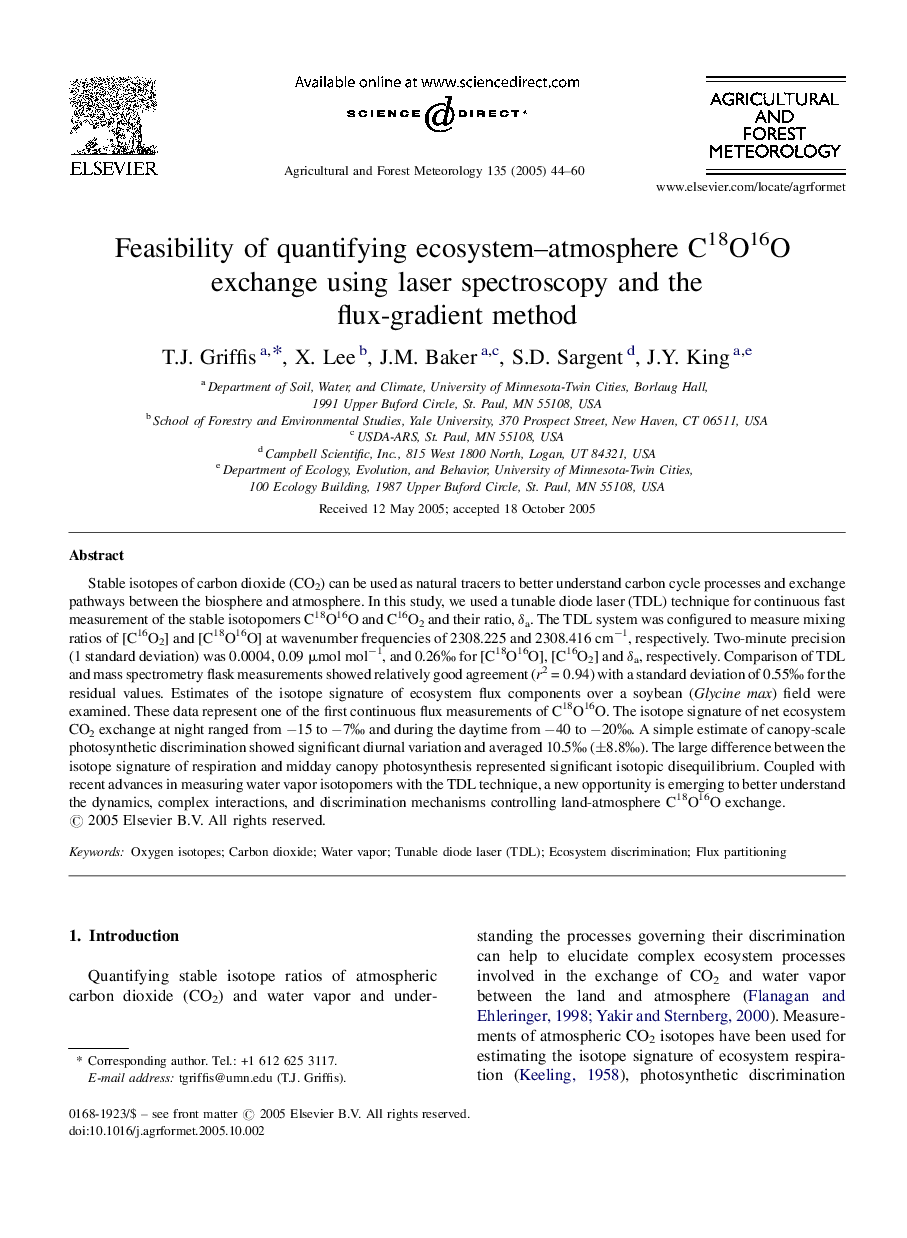| Article ID | Journal | Published Year | Pages | File Type |
|---|---|---|---|---|
| 9619374 | Agricultural and Forest Meteorology | 2005 | 17 Pages |
Abstract
Stable isotopes of carbon dioxide (CO2) can be used as natural tracers to better understand carbon cycle processes and exchange pathways between the biosphere and atmosphere. In this study, we used a tunable diode laser (TDL) technique for continuous fast measurement of the stable isotopomers C18O16O and C16O2 and their ratio, δa. The TDL system was configured to measure mixing ratios of [C16O2] and [C18O16O] at wavenumber frequencies of 2308.225 and 2308.416 cmâ1, respectively. Two-minute precision (1 standard deviation) was 0.0004, 0.09 μmol molâ1, and 0.26â° for [C18O16O], [C16O2] and δa, respectively. Comparison of TDL and mass spectrometry flask measurements showed relatively good agreement (r2 = 0.94) with a standard deviation of 0.55â° for the residual values. Estimates of the isotope signature of ecosystem flux components over a soybean (Glycine max) field were examined. These data represent one of the first continuous flux measurements of C18O16O. The isotope signature of net ecosystem CO2 exchange at night ranged from â15 to â7â° and during the daytime from â40 to â20â°. A simple estimate of canopy-scale photosynthetic discrimination showed significant diurnal variation and averaged 10.5â° (±8.8â°). The large difference between the isotope signature of respiration and midday canopy photosynthesis represented significant isotopic disequilibrium. Coupled with recent advances in measuring water vapor isotopomers with the TDL technique, a new opportunity is emerging to better understand the dynamics, complex interactions, and discrimination mechanisms controlling land-atmosphere C18O16O exchange.
Related Topics
Physical Sciences and Engineering
Earth and Planetary Sciences
Atmospheric Science
Authors
T.J. Griffis, X. Lee, J.M. Baker, S.D. Sargent, J.Y. King,
